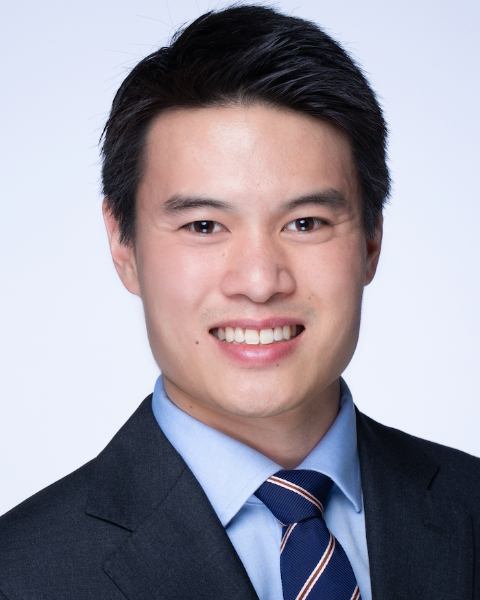QP 18 - Bio 5: Genomics and Biomarkers II
1102 - Luminal B Single-Cell Signature and Resistance to Hormone Therapy in Breast Cancer
Tuesday, October 1, 2024
5:25 PM - 5:30 PM ET
Location: Room 152

William Chen, MD
UCSF
San Francisco, CA
Presenter(s)
J. M. A. Vo-Phamhi1,2, M. Dias1,3, A. Subramanian1,3, L. Ni1,3, B. Bodenmiller4,5, C. C. Park1,3, F. Y. Feng1,3, and W. S. Chen1,3; 1Department of Radiation Oncology, University of California San Francisco, San Francisco, CA, 2Columbia University Vagelos College of Physicians and Surgeons, New York, NY, 3Helen Diller Family Comprehensive Cancer Center, University of California San Francisco, San Francisco, CA, 4ETH Zurich, Institute of Molecular Health Sciences, Zurich, Switzerland, 5Department of Quantitative Biomedicine, University of Zurich, Zurich, Switzerland
Purpose/Objective(s): The luminal B (LumB) breast cancer subtype is a prognostic and potentially predictive biomarker. LumB is inherently a cell subtype (as its name suggests) but has mostly been studied as a bulk tumor subtype, in large part because tumor profiling techniques have only recently begun to offer single-cell resolution. We sought to leverage single-cell proteomic data from two large cohorts with known long-term clinical outcomes to determine whether enrichment of the LumB cell subtype was associated with resistance to endocrine therapy in breast cancer. Materials/
Methods: Imaging mass cytometry data from a training cohort (METABRIC) and separate validation cohort were obtained and integrated. Patients with non-metastatic breast cancer who received surgery and adjuvant hormone therapy were included. Cell subtypes were defined using the Phenograph cell-clustering approach. Per-sample “cell fraction” of a given cell subtype was defined as cell count of that subtype divided by total number of cancer cells in the sample. The optimal cutpoint for defining LumB cell enrichment in the training cohort was determined using the maximally selected rank statistic approach, and the same cutpoint was used in the validation cohort. Distant metastasis free survival (DMFS) was the clinical endpoint for all univariate and multivariable (cause-specific proportional hazards) survival analyses. Resistance to endocrine therapy was defined at time of data collection as disease progression within 58 months of initiating endocrine therapy.
Results: Single-cell expression data for 1,335,512 cells from 929 breast cancer tumor biopsies comprising two cohorts were aggregated and harmonized. Single-cell clustering analysis revealed 34 distinct breast, stromal, and immune cell subtypes. Ten breast cancer cell subtypes demonstrated a co-expression pattern of hormone receptor positivity (HR+) and either Ki-67+ or HER2+, most consistent with a LumB or “LumB-like” expression profile. 353 patients in the training cohort and 161 patients in the validation cohort received adjuvant endocrine therapy and had long-term clinical follow-up. In the training cohort, patients with LumB-enriched tumors demonstrated shorter 10-year DMFS than those with LumB non-enriched tumors (70% vs. 82%, P<0.05). On multivariable analysis, LumB cell enrichment was prognostic of 10-year DMFS (HR 1.73; 95% CI, 1.04 to 2.87) independently of other known prognostic factors including tumor grade, T-stage, and lymph node positivity status. In the validation cohort, LumB cell enrichment was associated with resistance to endocrine therapy (33% vs. 18%, chi-square P<0.05).
Conclusion: Enrichment of LumB cells was associated with resistance to hormone therapy in two independent breast cancer cohorts. Our single-cell biomarker for LumB enrichment can be used to identify patients less likely to demonstrate durable response to hormone therapy and who may benefit from treatment intensification through other strategies.
Purpose/Objective(s): The luminal B (LumB) breast cancer subtype is a prognostic and potentially predictive biomarker. LumB is inherently a cell subtype (as its name suggests) but has mostly been studied as a bulk tumor subtype, in large part because tumor profiling techniques have only recently begun to offer single-cell resolution. We sought to leverage single-cell proteomic data from two large cohorts with known long-term clinical outcomes to determine whether enrichment of the LumB cell subtype was associated with resistance to endocrine therapy in breast cancer. Materials/
Methods: Imaging mass cytometry data from a training cohort (METABRIC) and separate validation cohort were obtained and integrated. Patients with non-metastatic breast cancer who received surgery and adjuvant hormone therapy were included. Cell subtypes were defined using the Phenograph cell-clustering approach. Per-sample “cell fraction” of a given cell subtype was defined as cell count of that subtype divided by total number of cancer cells in the sample. The optimal cutpoint for defining LumB cell enrichment in the training cohort was determined using the maximally selected rank statistic approach, and the same cutpoint was used in the validation cohort. Distant metastasis free survival (DMFS) was the clinical endpoint for all univariate and multivariable (cause-specific proportional hazards) survival analyses. Resistance to endocrine therapy was defined at time of data collection as disease progression within 58 months of initiating endocrine therapy.
Results: Single-cell expression data for 1,335,512 cells from 929 breast cancer tumor biopsies comprising two cohorts were aggregated and harmonized. Single-cell clustering analysis revealed 34 distinct breast, stromal, and immune cell subtypes. Ten breast cancer cell subtypes demonstrated a co-expression pattern of hormone receptor positivity (HR+) and either Ki-67+ or HER2+, most consistent with a LumB or “LumB-like” expression profile. 353 patients in the training cohort and 161 patients in the validation cohort received adjuvant endocrine therapy and had long-term clinical follow-up. In the training cohort, patients with LumB-enriched tumors demonstrated shorter 10-year DMFS than those with LumB non-enriched tumors (70% vs. 82%, P<0.05). On multivariable analysis, LumB cell enrichment was prognostic of 10-year DMFS (HR 1.73; 95% CI, 1.04 to 2.87) independently of other known prognostic factors including tumor grade, T-stage, and lymph node positivity status. In the validation cohort, LumB cell enrichment was associated with resistance to endocrine therapy (33% vs. 18%, chi-square P<0.05).
Conclusion: Enrichment of LumB cells was associated with resistance to hormone therapy in two independent breast cancer cohorts. Our single-cell biomarker for LumB enrichment can be used to identify patients less likely to demonstrate durable response to hormone therapy and who may benefit from treatment intensification through other strategies.
